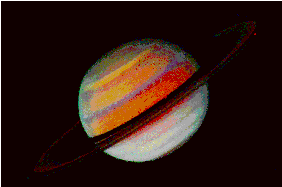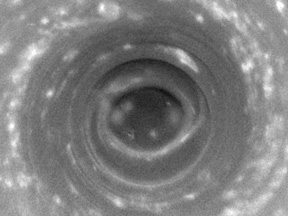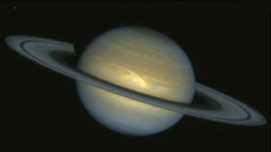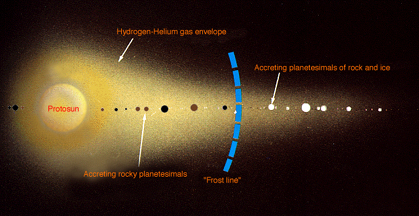This is an image of a storm on Saturn.
Click on image for full size
Reta Beebe (New Mexico State University), D. Gilmore, L. Bergeron (STScI), and NASA
An Overview of Motions in Saturn's Atmosphere
The most important motions in the atmosphere are
winds. The major winds in Saturn's atmosphere are the
zonal winds which are made of zones and belts.
Zones are high pressure systems and belts are low pressure systems. They flow in opposite directions around the entire planet. There are also smaller disturbances or storms within Saturn's zones and belts, similar to but much less powerful than Jupiters Great Red Spot.
You might also be interested in:

Wind is moving air. Warm air rises, and cool air comes in to take its place. This movement creates different pressures in the atmosphere which creates the winds around the globe. Since the Earth spins,
...more
The striped cloud bands on Saturn, like Jupiter, are divided into belts and zones. In a belt, the wind flows very strongly in one direction only. In a zone, the wind flows very strongly in exactly the
...more
The dramatic appearance of Saturn stems mainly from the spectacular rings. The atmosphere looks much less dramatic. The clouds of Saturn are much less colorful than those of Jupiter. This is because the
...more
Saturn's South Pole is very stormy. It is also surprisingly warm. A huge, hurricane-like storm is centered on the South Pole. Astronomers recently discovered that the pole is also warmer than any other
...more
The most important motions in the atmosphere are winds. The major winds in Saturn's atmosphere are the zonal winds which are made of zones and belts. Zones are high pressure systems and belts are low pressure
...more
The position of the planets in the solar nebula greatly affected their 1. size and 2. composition. This is because of the effect of how cold it was in the nebula. 1. The nebula was a lot warmer close to
...more
As shown in this picture, while they were forming in the solar nebula, the nucleii of the planets-to-be (called protoplanets) drew material to themselves from the cloud of gas and dust around them. The
...more














